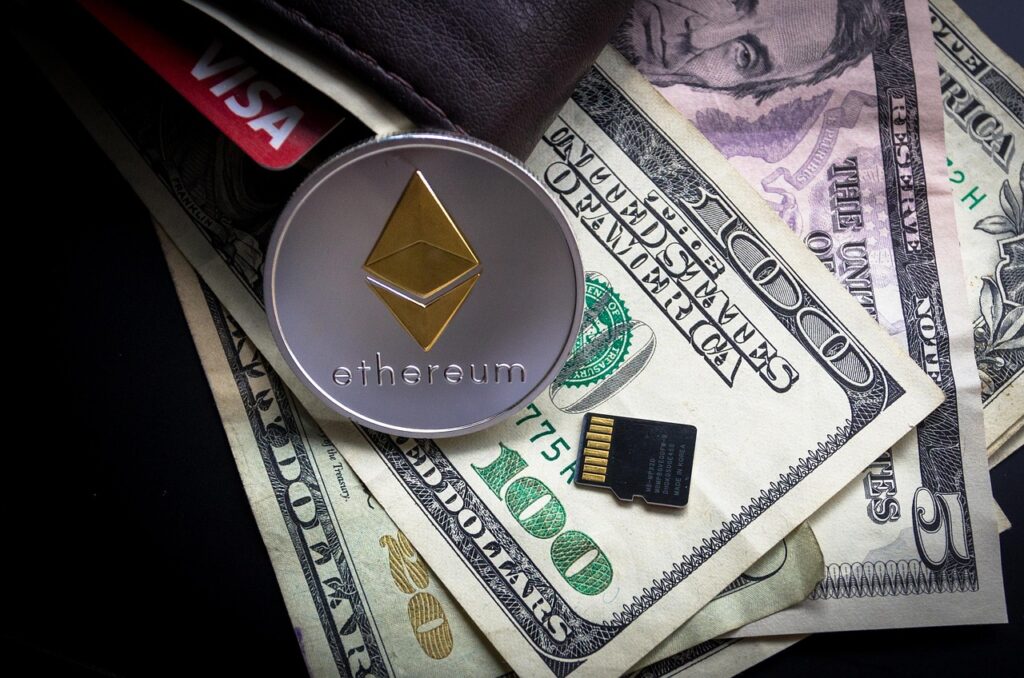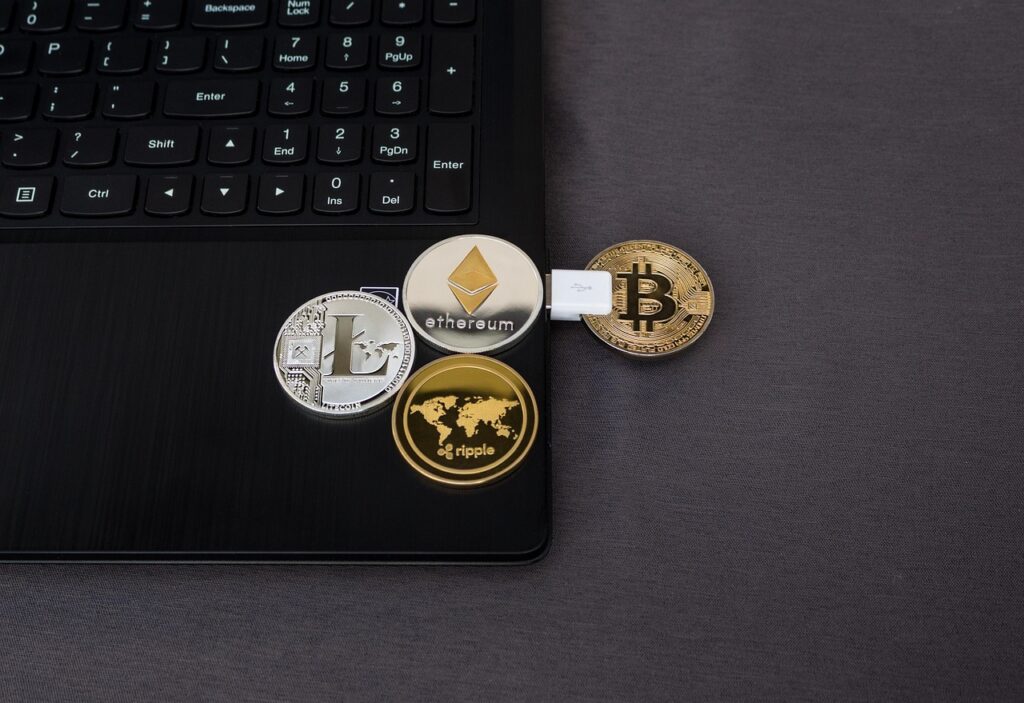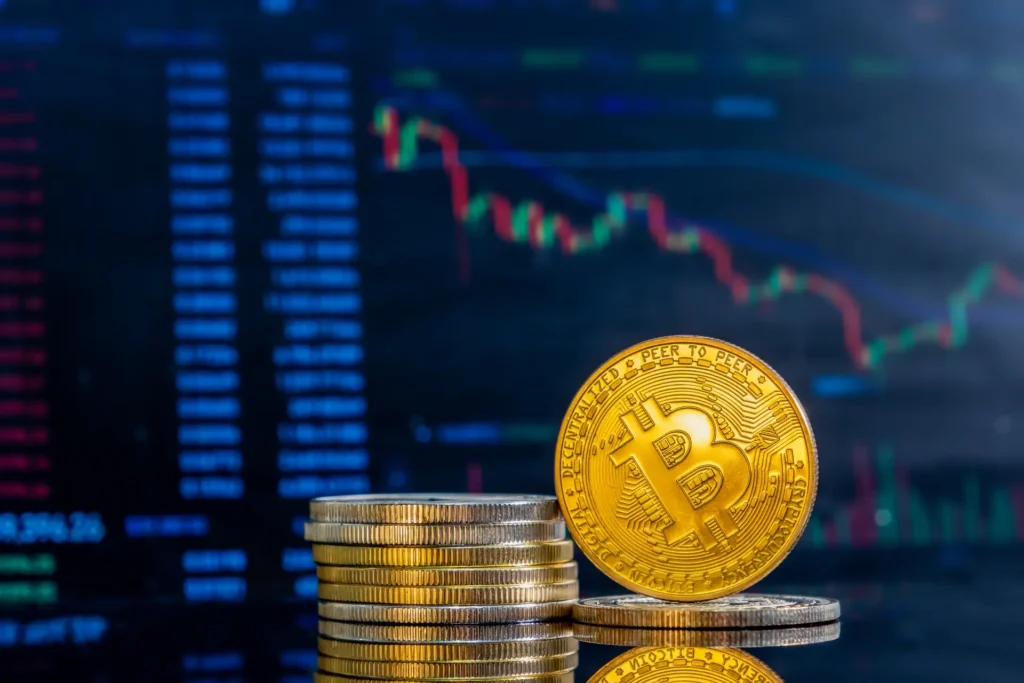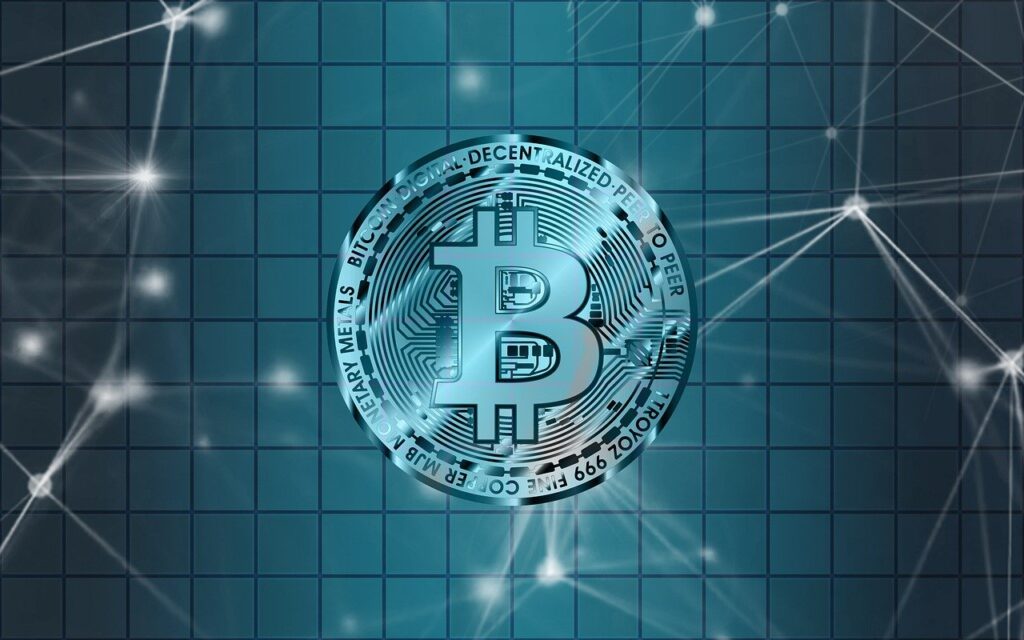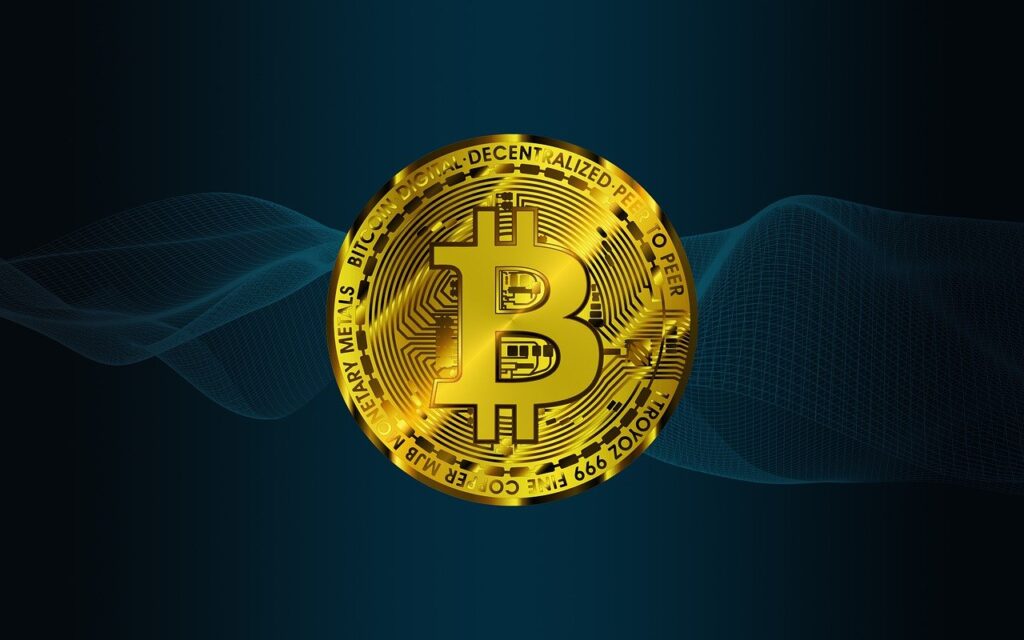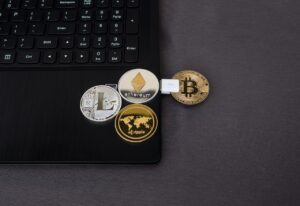Keeping tabs on your cryptocurrency assets is a regular task for anyone involved in digital finance. Whether you’re just starting or have been in the crypto space for a while, knowing how to check your crypto wallet balance is pretty important. It’s not as complicated as it might sound. This guide will walk you through the straightforward ways you can monitor your crypto holdings, making sure you always know where your digital money is.
Table of Contents
- 1 Key Takeaways
- 2 Types of Crypto Wallets: Hot vs. Cold Storage
- 3 Hot Wallets
- 4 Cold Wallets
- 5 Understanding Public Addresses and Wallet Identifiers
- 6 What is a Crypto Wallet Address?
- 7 How Wallet Addresses Work
- 8 Key Characteristics of Wallet Addresses
- 9 Types of Wallet Addresses
- 10 Public Addresses and Blockchain Explorers
- 11 Using Blockchain Explorers to Check Wallet Balances
- 12 Checking Bitcoin Wallet Balances with Online Tools
- 13 Interpreting Bitcoin Wallet and Balances
- 14 How to Check Your Bitcoin Wallet Balance
- 15 Common Practices for Verifying Bitcoin Wallet Balances
- 16 Conclusion
- 17 Viewing Ethereum and ERC-20 Token Balances
- 18 Checking ETH Balances
- 19 Viewing ERC-20 Token Balances
- 20 What if a Token Isn’t Showing Up?
- 21 Checking Wallet Balances on Other Blockchains
- 22 Using Blockchain Explorers for Other Chains
- 23 Wallet Applications for Diverse Blockchains
- 24 Utilizing Wallet Applications for Balance Monitoring
- 25 Leveraging Blockchain APIs for Automated Balance Checks
- 26 Why Use APIs for Balance Checks?
- 27 Common Use Cases for API Balance Checks
- 28 How to Fetch Balances Using an API
- 29 Key Considerations
- 30 Ensuring Security While Checking Wallet Balances
- 31 Use Reputable Sources
- 32 Protect Your Private Keys
- 33 Enable Two-Factor Authentication (2FA)
- 34 Keep Software Updated
- 35 Be Mindful of Privacy
- 36 Troubleshooting Common Balance Check Issues
- 37 Balance Discrepancies
- 38 Unconfirmed Transactions
- 39 Network Congestion and Fees
- 40 Wallet Software Issues
- 41 Private Key and Seed Phrase Security
- 42 Understanding Transaction History and Its Impact on Balance
- 43 Interpreting Transaction Records
- 44 How Transactions Affect Your Balance
- 45 Common Scenarios Affecting Balance Display
- 46 Regularly Monitoring Wallet Balances for Financial Health
- 47 Why Regular Monitoring Matters
- 48 Practical Steps for Balance Checks
- 49 Frequently Asked Questions
- 50 What is a crypto wallet address?
- 51 Do I need to connect my wallet to check its balance?
- 52 What is a blockchain explorer, and how does it help?
- 53 How can I check my balance using my mobile wallet app?
- 54 How do I check my Ethereum or token balances?
- 55 Is it important to check my wallet balance often?
- 56 What should I do if my wallet balance looks incorrect?
- 57 How can I check my balance safely?
Key Takeaways
- Different wallet types, like hot and cold storage, affect how you access and check your balance.
- Public addresses are like account numbers for your crypto, used to view transactions and balances.
- Blockchain explorers are online tools that let you see wallet balances and transaction history directly from the public ledger.
- Many wallet applications provide a simple interface to check your crypto wallet balance and manage your assets.
- Security is vital when checking your balance; always use trusted tools and protect your private information.
Types of Crypto Wallets: Hot vs. Cold Storage
When you first get into cryptocurrency, one of the first things you’ll need to figure out is how to store your digital money. This is where crypto wallets come in. Think of them like a digital bank account, but instead of a bank, you’re interacting directly with the blockchain. The way you store your crypto generally falls into two main categories: hot wallets and cold wallets.
Hot Wallets
Hot wallets are connected to the internet. This includes things like mobile apps, desktop software, and web-based wallets (often found on cryptocurrency exchanges). Because they’re online, they’re super convenient for everyday transactions. You can quickly send, receive, and trade your crypto. However, this constant connection also makes them more susceptible to online threats like hacking and phishing. If you’re frequently trading or spending crypto, a hot wallet is usually the way to go, but it’s wise to keep only what you need for immediate use in one.
Cold Wallets
Cold wallets, on the other hand, are not connected to the internet. The most common types are hardware wallets (physical devices that look like USB drives) and paper wallets (a piece of paper with your public and private keys printed on it). These are considered the most secure way to store cryptocurrency, especially for larger amounts or long-term holding. Since they’re offline, they’re much harder for hackers to access. The trade-off is that they’re less convenient for quick transactions. You usually have to connect the device or manually input information to make a transaction.
Here’s a quick look at how they stack up:
| Feature | Hot Wallet | Cold Wallet |
| Internet Connection | Yes (Risk of attack) | No (Fully offline) |
| Custody | Often third-party | You own the keys |
| Security | Medium | Maximum |
| Convenience | High | Low |
| Best For | Frequent transactions | Long-term storage |
Choosing between a hot and cold wallet often comes down to balancing convenience with security. For most people, using both is a good strategy: a hot wallet for daily spending and a cold wallet for the bulk of their holdings.
Understanding these differences is key to managing your digital assets safely. A crypto wallet is essential for managing digital assets, storing private keys to access funds on the blockchain. It enables sending, receiving, and authorizing transactions.What is a crypto wallet? Wallets are broadly categorized into hot wallets (online, like web, mobile, and desktop) and cold wallets (offline, like hardware and paper wallets). Hot wallets offer convenience but are more vulnerable to cyber threats, while cold wallets provide enhanced security for long-term storage. Safeguarding private keys is crucial to protect your cryptocurrency investments.
Understanding Public Addresses and Wallet Identifiers
What is a Crypto Wallet Address?
A crypto wallet address serves as your unique identifier within the digital currency ecosystem. Think of it like a bank account number, but for your cryptocurrency. It’s a string of characters that enables you to send and receive digital assets. This address is publicly visible on the blockchain, but it does not reveal your identity.
How Wallet Addresses Work
When someone wants to send you cryptocurrency, you provide them with your wallet address. They then use this address to direct the funds to your account. Conversely, when you send crypto, you’ll need the recipient’s wallet address. Every transaction involving these addresses is recorded on the blockchain, which acts as a public, immutable ledger. This transparency allows anyone to view transaction details, including the addresses involved and the amounts transferred, though not the identities behind the addresses.
Key Characteristics of Wallet Addresses
- Uniqueness: Each wallet address is distinct, ensuring that transactions are directed to the correct destination.
- Public Nature: Addresses are visible on the blockchain, facilitating transaction verification.
- Security: While the address itself is public, access to the funds associated with it is protected by private keys, which must be kept secret.
It is important to understand that while your wallet address is public, it is not directly linked to your personal information unless you choose to share it. This separation is a core aspect of cryptocurrency privacy.
Types of Wallet Addresses
Different cryptocurrencies use different formats for their wallet addresses. For example:
- Bitcoin: Addresses often start with ‘1’ or ‘3’, or use the newer ‘bc1’ format (Bech32).
- Ethereum: Addresses typically begin with ‘0x’ followed by a string of alphanumeric characters.
It is vital to use the correct address format for the specific cryptocurrency you are sending or receiving. Sending funds to an incorrect address format can result in the loss of those funds.
Public Addresses and Blockchain Explorers
Blockchain explorers are tools that allow you to view the transaction history and balances associated with any public wallet address. By entering a wallet address into a blockchain explorer, you can see all incoming and outgoing transactions, as well as the current balance of that address on the blockchain ledger. This is a primary method for verifying transactions and monitoring your crypto holdings.
Using Blockchain Explorers to Check Wallet Balances
Blockchain explorers are public, web-based tools that let you look at the transaction history and balances of any cryptocurrency address. Think of them as search engines for the blockchain. They are a straightforward way to check how to check crypto wallet balance without needing to log into your actual wallet software. These tools read data directly from the blockchain, offering a transparent view of a wallet’s activity.
Here’s a basic rundown of how they work:
- Find your public address: This is the string of letters and numbers that others use to send you crypto. You can usually find it in your wallet application.
- Choose an explorer: There are many explorers available, each often specializing in different blockchains. For Bitcoin, Blockchain.com Explorer is a popular choice. For Ethereum, Etherscan is widely used.
- Enter the address: Go to the explorer’s website and paste your public address into the search bar.
- View the details: The explorer will then display all transactions associated with that address, including incoming and outgoing amounts, and most importantly, the current balance.
It’s important to remember that explorers show the balance associated with a public address. They don’t interact with your private keys, which is why they are a safe way to view your holdings.
Blockchain explorers provide a window into the public ledger. They are read-only tools, meaning they cannot alter any information on the blockchain. This makes them a secure method for verifying transaction status and wallet balances.
Checking Bitcoin Wallet Balances with Online Tools
Checking your Bitcoin wallet balance is pretty straightforward, especially with the help of online tools. These services let you see your holdings without needing to log into your actual wallet, which is a nice bit of added security. It’s like having a window into the blockchain that shows exactly what’s in your Bitcoin address.
Interpreting Bitcoin Wallet and Balances
When you look at your Bitcoin balance, you’re seeing the total amount of BTC that has been sent to your public address and hasn’t yet been spent. Think of your public address as your bank account number – you can share it to receive funds, but it doesn’t give anyone access to your actual funds. The balance displayed is always based on the information recorded on the Bitcoin blockchain itself. This means it’s a public record, and anyone can look it up if they have the address.
How to Check Your Bitcoin Wallet Balance
There are a few ways to go about this, but using online tools is often the quickest. You’ll need your public Bitcoin address, which is a string of letters and numbers. You can usually find this in your wallet application. Once you have it, you just need to input it into a reliable online checker.
- Locate your public Bitcoin address. This address typically starts with 1 or bc1. You can find it within your cryptocurrency wallet software or hardware device.
- Enter the address into an online balance checker. Many websites offer this service.
- View your balance. The tool will then query the blockchain and display your current Bitcoin balance.
Common Practices for Verifying Bitcoin Wallet Balances
Many people use what are called blockchain explorers for this. These are websites that let you look up any address on the Bitcoin network and see its transaction history and current balance. It’s a very transparent way to check things. Some popular explorers are known for providing real-time data, so you get the most up-to-date picture of your funds. It’s a good idea to use a well-known explorer to make sure the information is accurate.
It’s important to remember that when you check your balance using a third-party tool, you are only providing your public address. This address is meant to be public, like an email address. It does not reveal your private keys or give anyone the ability to move your funds. The tool simply reads the data that is already on the blockchain associated with that address.
Some tools might also show unconfirmed transactions, which are transactions that have been initiated but not yet fully processed by the network. This can help understand why your balance might not immediately reflect a recent deposit or withdrawal. For a quick check, these online tools are quite effective and don’t require any special software or account creation. You can even check balances for other cryptocurrencies like Ethereum (ETH) using similar methods on specialized explorers.
Conclusion
Using online tools to check your Bitcoin balance is a simple and secure method. By knowing your public address and using a reputable blockchain explorer or balance checker, you can easily keep track of your cryptocurrency holdings. This transparency is one of the key features of blockchain technology, allowing for easy verification of transactions and balances.
Viewing Ethereum and ERC-20 Token Balances
When you’re dealing with Ethereum, checking your balance is pretty straightforward, especially if you’re looking at Ether (ETH) itself or any tokens built on the Ethereum network, like those following the ERC-20 standard. It’s not too different from checking Bitcoin, but some specific tools and methods work best for the Ethereum ecosystem.
Checking ETH Balances
To see how much ETH you have, you’ll typically use a blockchain explorer or a wallet application. Blockchain explorers are websites that let you view all the transactions and balances on the Ethereum network. You just need your public wallet address. When you paste your address into an explorer, it will show you the current ETH balance associated with that address. It’s like looking up a public record.
Viewing ERC-20 Token Balances
ERC-20 tokens are a bit different because they aren’t directly part of the Ethereum blockchain’s native balance. Instead, their balances are recorded within smart contracts. So, when you check an ERC-20 token balance, you’re asking a specific smart contract, “How much of this token does this address hold?”
Here’s how it generally works:
- Use a Wallet Application: Most modern crypto wallets are designed to automatically detect and display your ERC-20 tokens. When you add an Ethereum address to a wallet, it often scans for common tokens you might hold.
- Use a Blockchain Explorer: You can also use explorers like Etherscan. When you look up your address on Etherscan, there’s usually a dedicated tab or section for “Token Balances” or “ERC-20 Holdings.” You’ll see a list of tokens and the amounts you hold for each.
- Connect to Decentralized Applications (dApps): If you’re using a dApp, like a decentralized exchange or a DeFi lending platform, you can usually connect your wallet. The dApp will then display the ETH and ERC-20 tokens it can see in your connected wallet.
The key is that your wallet or the explorer needs to know which smart contract governs the specific ERC-20 token you’re interested in.
It’s important to remember that your ETH balance is directly on the blockchain associated with your address. ERC-20 token balances, however, are managed by the token’s smart contract. This distinction is why sometimes you might see your ETH but not your tokens if your wallet isn’t configured to display them.
Here are some common ERC-20 tokens you might encounter:
- USDT (Tether)
- USDC (USD Coin)
- DAI (MakerDAO)
- SHIB (Shiba Inu)
- UNI (Uniswap)
If you’re looking to participate in new token sales, understanding how to check these balances is a good first step before you buy cryptocurrency.
What if a Token Isn’t Showing Up?
Sometimes, a token you expect to see might not appear automatically. This usually means your wallet or the explorer doesn’t have the contract address for that specific token. In such cases, you’ll need to manually add the token to your wallet. You’ll need the token’s contract address, its symbol, and the number of decimals it uses. You can usually find this information on the token’s official website or a reputable crypto data site.
Checking Wallet Balances on Other Blockchains
Beyond Bitcoin and Ethereum, many other blockchains exist, each with its way of tracking balances. Checking your holdings on these networks often involves similar methods, primarily using blockchain explorers or specialized wallet applications. The core principle remains the same: you need to query the network for the balance associated with your public address.
Using Blockchain Explorers for Other Chains
Many blockchain explorers support multiple cryptocurrencies. If you’re looking to check a balance on a chain like Solana, Cardano, or Polkadot, you’ll typically find dedicated sections or search functionalities on popular explorer sites. You just need to find an explorer that lists the specific blockchain you’re interested in. Once you locate the correct explorer, the process is usually straightforward:
- Identify a suitable explorer: Search for explorers that specifically mention support for your blockchain (e.g., Solscan for Solana, Cardanoscan for Cardano).
- Find the search bar: Most explorers have a prominent search bar on their homepage.
- Enter your public address: Type or paste your wallet address into the search bar.
- Review the results: The explorer will display your address’s transaction history and current balance for the native coin of that blockchain.
Some explorers might also show balances for tokens issued on that blockchain, similar to how Etherscan displays ERC-20 tokens. It’s always a good idea to verify that the explorer you are using is reputable and actively maintained for the specific blockchain.
Wallet Applications for Diverse Blockchains
Most cryptocurrency wallet applications are designed to be multi-chain. This means that a single wallet application can often manage assets across several different blockchains. When you add a new cryptocurrency or connect to a new network within your wallet, it usually handles the balance display automatically. You simply need to ensure that the wallet supports the blockchain in question and that your account or wallet is correctly configured for that network. For instance, if you’re using a popular multi-currency wallet, you might just need to select the specific blockchain from a list within the app to view your balances for that chain. This offers a convenient way to monitor various holdings from one place.
The underlying technology for checking balances across different blockchains is quite similar. It relies on nodes within each network to provide the requested information about a specific address. The main difference lies in the specific tools and interfaces that interact with these nodes.
Utilizing Wallet Applications for Balance Monitoring
Many people find that using dedicated wallet applications is the most straightforward way to keep tabs on their cryptocurrency balances. These applications, whether they are mobile apps, desktop software, or even browser extensions, are designed to connect directly to the blockchain. This connection allows them to fetch and display your holdings in a user-friendly format.
The primary advantage of these applications is their convenience and accessibility. You can typically see your current balance right on the main dashboard or home screen as soon as you open the app. Beyond just showing balances, many wallet applications also provide transaction history, allow you to send and receive crypto, and sometimes even offer features like staking or swapping.
Here’s a look at common types of wallet applications and how they present balance information:
- Mobile Wallet Apps: These are very popular for everyday use. After downloading and setting up a mobile wallet, your current crypto balance is usually displayed prominently on the main screen. You can often check balances for multiple cryptocurrencies within the same app.
- Desktop Wallet Software: Installed directly onto your computer, desktop wallets offer robust features. Once launched, the balance for your stored assets is typically shown in a clear section of the application’s interface.
- Hardware Wallets: While hardware wallets themselves are physical devices, they are often managed through companion software or apps. These interfaces will display the balances associated with the private keys stored on the hardware device.
When using any wallet application, it’s important to remember that you are interacting with your assets through an interface. The actual cryptocurrencies remain on the blockchain, and the wallet application simply provides a way to access and manage them using your private keys. Always ensure your wallet software is updated to the latest version for security and access to new features. For those looking for a secure way to manage their digital assets, exploring different cryptocurrency wallet options is a good starting point.
Leveraging Blockchain APIs for Automated Balance Checks
For those building applications or needing to track balances programmatically, blockchain APIs offer a direct route. Instead of manually checking, you can set up systems to automatically fetch wallet balances. This is super handy for a bunch of reasons.
Why Use APIs for Balance Checks?
- Real-time Data: Get up-to-the-minute balance information without manual intervention.
- Integration: Embed balance checks directly into your apps, dashboards, or services.
- Automation: Set up alerts, trigger actions, or monitor multiple wallets efficiently.
Common Use Cases for API Balance Checks
- User Dashboards: Displaying a user’s current crypto holdings within your platform.
- DeFi Platforms: Verifying if a user has sufficient funds for a swap or transaction, including gas fees.
- Automated Trading Bots: Monitoring balances to trigger buy or sell orders based on predefined conditions.
- Analytics Services: Tracking the flow of funds into or out of specific addresses over time.
How to Fetch Balances Using an API
Most blockchains provide APIs, often through JSON-RPC calls. You’ll typically need an API key from a node provider to access these services. The process generally involves sending a request to a specific endpoint with parameters like the wallet address and the desired block height (e.g., ‘latest’).
For example, to check an Ethereum balance, you might use a method like eth_getBalance. The response will usually return the balance in the smallest unit of the cryptocurrency (like wei for Ether). You’ll then need to convert this value to the standard unit (e.g., ETH) by dividing by the appropriate power of 10.
Always protect your API keys. Never embed them directly in client-side code or public repositories. Use secure methods like environment variables to manage your credentials.
Key Considerations
- API Provider: Choose a reliable provider that offers good uptime and support for the blockchains you need.
- Rate Limits: Be aware of any request limits imposed by the API provider to avoid service interruptions.
- Data Format: Understand how the balance is returned (e.g., in wei, satoshis) and how to convert it.
- Security: Keep your API keys secure to prevent unauthorized access. If you suspect a compromise, revoke and regenerate your keys immediately. This is especially important when working with Ethereum APIs.
Ensuring Security While Checking Wallet Balances
When you’re checking your crypto wallet balance, keeping your information safe is a big deal. It’s not just about seeing how much you have; it’s about making sure no one else can get to it. Think of it like checking your bank account – you wouldn’t do it on a public computer, right? The same idea applies here. You want to be careful about where you enter your wallet details or even just your public address.
Use Reputable Sources
Always get your information from places you trust. If you’re using a website or an app to check your balance, make sure it’s well-known and has good reviews. Avoid clicking on links in emails or social media that promise to show your balance, as these can often lead to fake sites designed to steal your crypto. Stick to official websites or well-regarded third-party tools.
Protect Your Private Keys
Your private keys are like the master key to your crypto. Never share them with anyone, ever. If a service asks for your private keys to check your balance, that’s a huge red flag. You should only ever need your public address to view your balance on a blockchain explorer. Keeping your private keys offline, perhaps on a hardware wallet, is the safest bet for overall crypto wallet security.
Enable Two-Factor Authentication (2FA)
If the wallet application or exchange you use offers 2FA, turn it on. This adds an extra layer of protection, usually requiring a code from your phone or an authenticator app in addition to your password. It makes it much harder for someone to access your account even if they somehow get your password.
Keep Software Updated
Just like your phone or computer, your crypto wallet software and any related apps need to be kept up-to-date. Developers release updates to fix security holes that hackers might try to exploit. Regularly checking for and installing these updates can prevent a lot of potential problems.
Be Mindful of Privacy
While blockchains are often public, meaning transactions are visible, your public address itself can sometimes reveal more than you’d like. For added privacy, consider using a new address for each transaction if your wallet supports it. This can make it harder for someone to track all your activity and balances over time.
When checking your balance, always remember that your public address is visible to anyone. While this is necessary for transactions, be cautious about sharing it unnecessarily or linking it to personal information if privacy is a concern.
Troubleshooting Common Balance Check Issues
Balance Discrepancies
Sometimes, the balance you see might not match what you expect. This can happen for a few reasons. One common issue is delayed network confirmations. Transactions, especially on busy blockchains, take time to be added to blocks. Until a transaction is confirmed, your wallet might not reflect the updated balance accurately. Another reason could be incorrect address entry. Double-checking the public address you are querying is always a good first step. If you’re using a third-party tool, ensure it’s reputable and up-to-date with the latest blockchain data.
Unconfirmed Transactions
Unconfirmed transactions are those that have been broadcast to the network but not yet included in a block. These won’t affect your spendable balance until they are confirmed. Some wallet interfaces might show these pending transactions, leading to confusion if you’re only looking at the confirmed balance. It’s important to understand that a pending deposit isn’t spendable, and a pending withdrawal hasn’t left your wallet yet.
Network Congestion and Fees
High network congestion can lead to longer confirmation times and increased transaction fees. If you’re trying to check a balance related to a recent transaction, network delays might be the cause of any perceived discrepancy. Similarly, if a transaction was sent with insufficient fees, it might get stuck in the mempool, not showing as confirmed or deducted from your balance for an extended period. This can be particularly frustrating when trying to sell large amounts of cryptocurrency.
Wallet Software Issues
Occasionally, the issue might lie with the wallet software or application itself. A bug, outdated version, or synchronization problem could lead to incorrect balance displays. Try refreshing your wallet, clearing its cache, or updating to the latest version. If you’re using a hardware wallet, ensure it’s properly connected and communicating with its companion software. Sometimes, simply restarting the wallet application can resolve minor glitches.
Private Key and Seed Phrase Security
It’s vital to remember that your wallet’s balance is tied to your private keys or seed phrase. If you’ve lost access to these, you won’t be able to access your funds, regardless of what a blockchain explorer might show. Never share your private keys or seed phrase with anyone. If you suspect your keys have been compromised, move your funds to a new, secure wallet immediately. This is the most critical aspect of managing your crypto assets.
Understanding Transaction History and Its Impact on Balance
Understanding your transaction history is key to knowing where your crypto has gone and why your balance looks the way it does. Every time you send or receive cryptocurrency, it’s recorded on the blockchain. This record, or transaction history, shows all the inputs and outputs associated with your wallet address.
Interpreting Transaction Records
Your transaction history is essentially a ledger of all activity. For each transaction, you’ll typically see:
- Transaction ID (TxID): A unique identifier for each transaction.
- Date and Time: When the transaction occurred.
- From Address: The sending wallet address.
- To Address: The receiving wallet address.
- Amount: The quantity of cryptocurrency transferred.
- Fees: The amount paid to miners or validators for processing the transaction.
The sum of all incoming transactions minus the sum of all outgoing transactions and fees gives you your current balance. It’s like looking at your bank statement, but on a public, immutable ledger.
How Transactions Affect Your Balance
When you receive crypto, the amount is added to your wallet’s total. Conversely, when you send crypto, the amount is subtracted. It’s important to remember that transaction fees are also deducted from your balance. These fees can fluctuate based on network congestion. For example, if you send 1 BTC and pay a 0.0001 BTC fee, your balance will decrease by 1.0001 BTC.
Sometimes, a transaction might appear to be missing, or your balance might seem off. This is often due to pending transactions that haven’t been confirmed yet by the network. Once confirmed, they will be reflected accurately.
Common Scenarios Affecting Balance Display
- Pending Transactions: Transactions waiting for network confirmation won’t immediately update your displayed balance in some wallet interfaces.
- Multiple Addresses: If your wallet software manages multiple addresses, the total balance shown is usually the sum across all those addresses.
- Token Transfers: For tokens like ERC-20, the balance displayed is for that specific token, separate from the native coin (like ETH) used for gas fees. You need enough of the native coin to send tokens.
- Staking Rewards or DeFi Activity: If you’re using your crypto in staking or decentralized finance (DeFi) protocols, these activities can also impact your overall holdings, though they might be tracked separately from simple send/receive transactions. Understanding your crypto holdings involves looking at all these aspects.
Regularly Monitoring Wallet Balances for Financial Health

Keeping an eye on your crypto wallet balances isn’t just about knowing how much you have; it’s a key part of managing your money wisely in the digital asset space. Think of it like checking your bank account regularly, but with a few extra layers. When you consistently monitor your holdings, you get a clearer picture of your financial situation, which helps you make better choices about buying, selling, or holding your crypto. It’s about staying informed and in control.
Why Regular Monitoring Matters
- Track Performance: See how your investments are doing over time. Are they growing, shrinking, or staying steady? This helps you understand what’s working.
- Manage Spending: If you use crypto for everyday purchases, knowing your balance prevents you from overspending or running out of funds unexpectedly.
- Identify Opportunities: A steady balance might mean it’s a good time to invest more, while a dip could signal a chance to buy at a lower price.
- Security Awareness: Unexpected changes in your balance could indicate unauthorized activity, prompting you to investigate further.
Practical Steps for Balance Checks
- Schedule It: Set a reminder, maybe weekly or bi-weekly, to log in and check your balances across all your wallets.
- Use a Dashboard: If you have multiple wallets or assets, consider using a portfolio tracker or a wallet app that aggregates everything in one place. This makes it much easier to get an overview.
- Review Transaction History: Don’t just look at the total balance. Glance at your recent transactions to make sure everything looks normal and you recognize all the activity.
Staying on top of your crypto balances is a habit that pays off. It’s not complicated, but it does require a bit of discipline. By making it a regular part of your routine, you’re setting yourself up for more secure and informed financial decisions in the crypto world. It’s a simple way to keep your digital finances healthy.
Checking your crypto wallet balance is a fundamental step in managing your digital assets effectively. It allows you to stay informed about your holdings and make sound financial decisions. Whether you’re using a hot wallet or a cold storage solution, regular checks are a good practice.
Frequently Asked Questions
What is a crypto wallet address?
Think of your crypto wallet address like your email address or a bank account number. It’s a unique string of letters and numbers that others use to send you cryptocurrency. You can find it within your wallet app.
Do I need to connect my wallet to check its balance?
Yes, you can check your Bitcoin balance without connecting your wallet or creating an account. Many websites and apps let you enter your public Bitcoin address to see your balance and recent transactions.
What is a blockchain explorer, and how does it help?
Blockchain explorers are websites that let you see all the transactions happening on a blockchain, like Bitcoin’s. You can type your wallet address into their search bar to view your balance and transaction history.
How can I check my balance using my mobile wallet app?
Most mobile wallet apps show your current balance right on the main screen. They often connect directly to the blockchain to give you the most up-to-date information.
How do I check my Ethereum or token balances?
For Ethereum and tokens built on it (like ERC-20 tokens), you’ll use similar methods. You can use a blockchain explorer that supports Ethereum or check within your Ethereum-compatible wallet app.
Is it important to check my wallet balance often?
Yes, it’s a good idea to check your wallet balance regularly. This helps you keep track of your investments, make sure transactions go through correctly, and manage your digital assets effectively.
What should I do if my wallet balance looks incorrect?
If your balance seems wrong, first double-check that you entered the correct wallet address. Also, remember that transactions can take time to be confirmed on the blockchain, so a pending transaction might not show up immediately.
How can I check my balance safely?
Always be careful about where you enter your wallet address. Only use trusted websites or apps. Never share your private keys or seed phrase with anyone, as these give full control over your funds.

